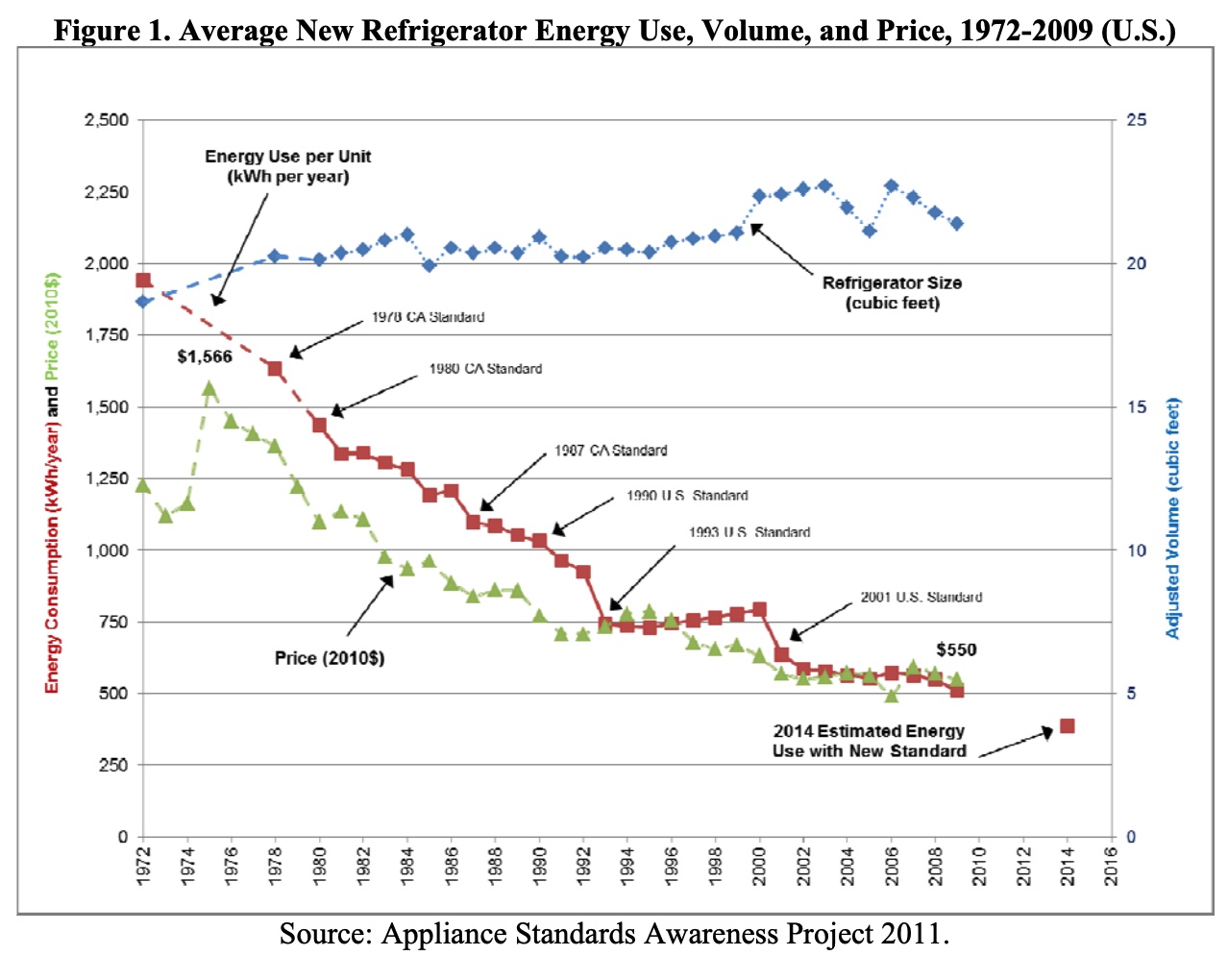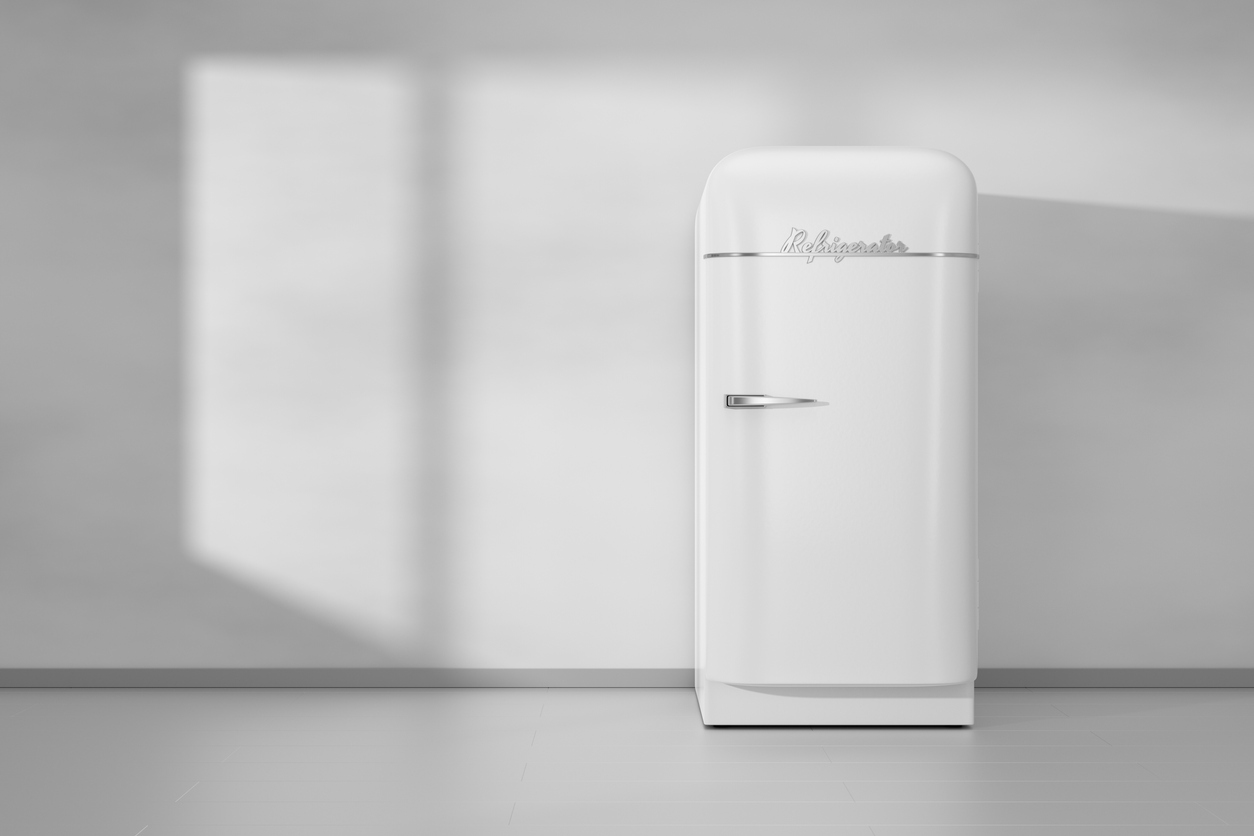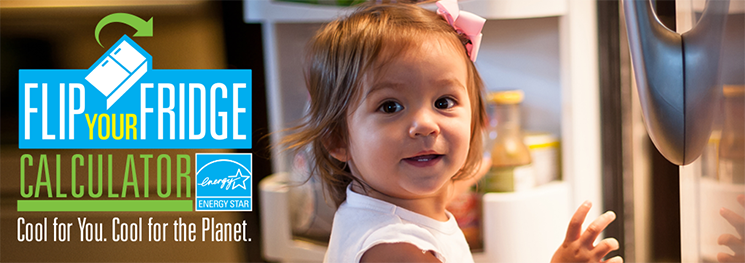When most appliances break down, you need to replace them right away, since it’s likely you have just one washer, dryer, stove or dishwasher. Refrigerators are different. Nearly a quarter of American homes have two or more fridges. Sometimes the extra fridge is new, but since most refrigerators are designed to last 10-15 years, it’s not uncommon for an older model to be retired to a basement or garage, while a new fridge takes its place in the kitchen.
And unlike other major appliances, refrigerators run frequently throughout the day. Typically one hour on, one hour off. Their overall energy efficiency can make a difference in your monthly utility bill.
So here are some myth-busting—or confirming—ideas to ponder:
True or False?
– Getting rid of the old fridge in your garage will save you money in the long run.
- Better to hold onto an old fridge until it breaks down since all the energy that goes into making a new fridge would dwarf the energy and money savings from replacing it.
Maybe you are too sophisticated to play a game with only one answer. As usual, as with any question about sustainable living, it depends. For sure, having an old, power-hungry refrigerator in your garage does not make sense from an energy perspective, ever. It’s worse if you only use it to keep a few six-packs cold during the summer or for your yearly Super Bowl blowout party.
Calculating the cost of new versus old refrigerators
Fortunately, you can make accurate calculations about the economics of buying a new fridge—or not—that can help you decide when it makes the most sense to swap out an old fridge for a new one, inside or out of the garage. The Environmental Protection Agency has a Flip Your Fridge calculator, which requires only the style, size, and approximate age of your old fridge, and the electricity costs in your area. The calculator will tell you the approximate annual cost of electricity for your current model and how much you’d save by buying a new EnergySTAR model.
The Total Carbon Footprint of Your Refrigerator
The Flip Your Fridge calculator does not consider a new refrigerator’s embodied energy and associated carbon emissions. The embodied energy of an appliance includes the energy used to extract the raw materials, such as iron ore, used in creating it, the manufacturing cost, the cost of transporting those raw materials to a factory and the finished product to a customer, and the cost to dispose of it.
When you compare the embodied energy of a new refrigerator and the associated carbon emissions to the operating costs of an old refrigerator, it makes little sense to keep a fridge older than about a dozen years. This is because the operational costs of an old refrigerator dwarf the cost of the embodied energy of a new one, and a new refrigerator may be five times more efficient than an older model.
Dovetail Partners analyzed a refrigerator’s energy use, including embodied energy, for a refrigerator bought in 2008 and used for ten years. The cost of operating the refrigerator over ten years is about 70,000 MJ (megajoules), compared to the combined raw materials processing, manufacturing, and disposal costs of less than 10,000 MJ. An earlier study by the Natural Resources Defense Council arrived at a similar conclusion.
These analyses don’t take into account the cost of buying a new refrigerator, which can vary widely, especially when you consider all the sizes, models and features available. A comparison of ENERGY STAR rated models is a good place to start. In the fall, retailers are heading into their big sales season leading up to the holidays, so look for sales over long holiday weekends like Columbus Day and Thanksgiving, as well as Black Friday and Cyber Monday.

When a Freezer Is the Right Choice
We’ve compared old and new refrigerators, learning that it’s a good idea to retire old refrigerators after about 12 years. Now let’s consider an ENERGY STAR freezer in your basement that operates more efficiently than the freezer in the fridge in the kitchen. How does it impact your costs and carbon emissions?
Chest freezers are surprisingly energy efficient and they’re opened less frequently than the kitchen fridge, keeping the cold air inside. So if you have lots of frozen food, a freezer is a better choice than keeping an old fridge alive.
Some Simple Rules for Fridge Replacement
When buying a new fridge:
- Buy an ENERGY STAR-rated model.
- Choose a new fridge with the capacity to address all your refrigeration needs.
- Select a model with the freezer on the bottom; since warmer air rises, the heat transfer between a bottom freezer and the refrigerator above it will be minimal.
- Keep it simple – extra features like cold water and ice dispensers drive up energy costs.
Deciding about an old fridge:
- Go to Flip Your Fridge to find out if replacing your old fridge (or fridges) makes economic sense.
- Get rid of your beer fridge and instead cool your beers a few at a time in your primary fridge, or purchase an efficient mini fridge.
- To freeze food for seasonal or long term use, get a new, efficient chest freezer instead of using an old fridge.
- Don’t keep a second fridge in a location that heats up in the summer, as it will need to work harder to stay cool.
- If you do hold onto your old fridge, check for worn or loose gaskets that reduce its energy efficiency over time, and replace them as needed.
- Keep your second fridge as full as possible, including bottles of liquid that help it stay colder with less frequent cycles.
Jim Gunshinan is a science writer who covers energy and the environment. He was the editor of No Regrets Remodeling, Second Edition, a science blogger for a PBS affiliate, and editor of a magazine covering green home building and renovation. Jim lives in Walnut Creek, California.

